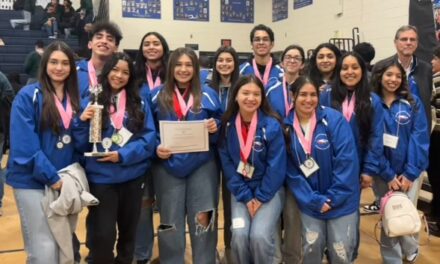The flood plain of the San Joaquin River, which runs through the San Joaquin Valley and just east of Dos Palos, will benefit from a $40 million project to support floodplain restoration efforts focused on the San Joaquin and Tulare basins.
Climate and land-use scientists have identified the creation and enhancement of floodplains as key to addressing issues arising from climate change. Recent modeling at UCLA and UC Irvine predicts massive flooding from engorged atmospheric rivers, often carrying double or triple the volume of water that fell in 2017 and threatened to spill out of several California reservoirs.
By restoring flood plains, those fast-moving floods have a place to slow down and spread out, lessening the pressure on fragile levees protecting downstream communities.
The state funding for the project was spearheaded by Assemblymember Adam Gray, who said he recognized the value of flood plains in helping solve a host of problems threatening the Valley.
The allocation will be managed by the conservation group River Partners, the leading floodplain restoration group in the state with nearly 300 completed restoration projects with roughly 50 more ongoing
“What I like about River Partners,” Gray said, “is that they don’t look at the plight of fish and our environment then wring their hands. They get their hands dirty, doing the work to make things better.” And they invite everyone to the table–from farmers to farmworkers to scientists to tribal leaders and everyone else who wants to join in.”
Gray also pointed to myriad other benefits. Water on floodplains soaks into the ground, nourishing native valley oak and cottonwood trees, which are excellent at carbon sequestration. That water is also naturally filtered, improving its quality and increasing supplies for communities and farmers who depend on it during drought.
“These rivers are not only the lifeblood of my district,” Gray said, “providing the foundation for every farm, every job, and every bite of the food we eat, they also are vibrant, living wildlife habitats that need to be protected and improved,” said Gray.
“River Partners has been a leader in helping us preserve our rivers; now we can concentrate on making them better for both wildlife and people,” said Gray, who has gotten a close look at the organization’s work in his Assembly district.
Gray said that water policy has been a core issue for him throughout his 10-year Assembly career. The Tuolumne, Merced, Stanislaus and San Joaquin rivers all flow through his district along with State Water Project and California Aqueduct canals; the CVP’s San Luis Reservoir is just west of Los Banos.
In the early 2000s, River Partners acquired roughly 2,100 acres near Grayson in Stanislaus County and — with the help of local farmers, farm workers and volunteers — turned it into a spectacular habitat for fish, waterfowl, mammals and native plants. In May, Gov. Gavin Newsom announced the preserve has been designated to become a state park.
With the help of the budget allocation, River Partners president Julie Rentner envisions similar preserves being created along many of the Valley’s rivers. She was unequivocal about the importance of the work.
“The science couldn’t be clearer,” said Rentner. “The San Joaquin Valley is ground zero for both more intense and frequent climate-driven floods and droughts on the horizon. Expanding and restoring the Valley’s floodplains provides significant benefits on both fronts. (This) budget decision represents a strong down payment on a brighter future for the Valley’s environment, communities, and economy.”
“I’m proud we could get this done and look forward to the work ahead,” said Gray, who
represents the 21st Assembly District of California, which includes all of Merced and part of Stanislaus counties.


